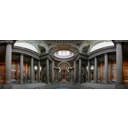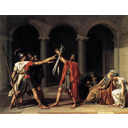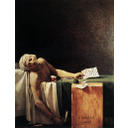Neoclassical Art
Neoclassicism was very common across Europe between the 1750s and the 1830s.
- It followed all the classical principles for art and was quite well accepted by the enlightened thinkers and middle-class people.
- It is the style that reflects order and moral.
- Enlightened despots followed this style to rearrange and to modernise the cities.
Architecture:
Buildings were well-proportioned and featured classical elements, such as rounded arches, columns and domes. An excellent example of this style is the Pantheon in Paris (Soufflot). In Spain the best example is the Gabinete de Ciencias Naturais designed by Villanueva (The Prado Museum nowadays).
Painting:
Neoclassical painters imitated classical sculptures, so their works featured people who look like statues. Drawing is really marked and dominates over colour.
The most common themes are mythology, portraits, and history.
The main neoclassical painters are Anton Raphael Mengs, and Jacques-Louis David (Oath of the Horatii, The Intervention of the Sabine women, The Death of Marat, or Consecration of the Emperor Napoleon I and Coronation of the Empress Josephine
Sculpture:
Neoclassical sculptures were usually made of marble and depicted mythological themes or famous people. The most important neoclassical sculptor is the Italian Antonio Canova (Cupid and Psyche, or Paolina Borghese as Venus Victrix)
Neoclassical art
All images can be found on Wikipedia CC BY-SA 4.0



